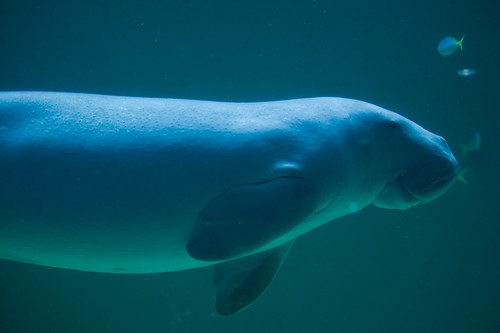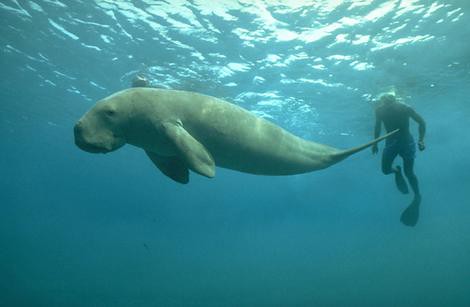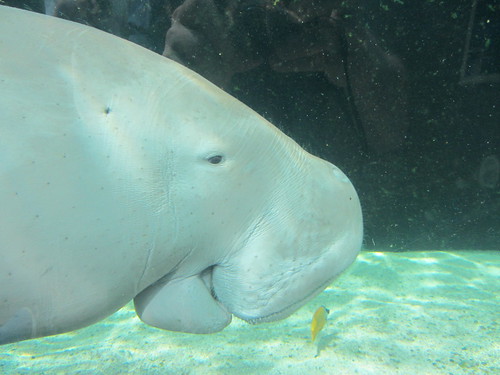We've compared manatees and dugongs and we've talked about the manatee on Wildlife Wednesday. That means this week is all about the dugong!
 by morigamikenta
by morigamikenta Dugongs live in the Pacific and Indian Ocean, from the East Coast of Africa to Australia. The highest concentration of their population is around Northern Australia.
There is only 1 species of dugong.
Dugongs are the smallest member of the order Sirenia. This order also includes manatees.
Dugong comes form the Malay word 'duyong', that means “lady of the sea.”
 by Earthrace Conservation
by Earthrace Conservation The dugong is related to the elephant, they have tusks. They are usually only visible on mature males.
Dugongs are cream colored when they are born and turn dark gray as adults.
Dugongs are shaped like a spindle. They're wide in the middle and their bodies taper at the head and tail.
Dugongs have their first young at about age 10. They have 1 calf every 3-5 years. Calves remain with their mothers for about 18 months after their birth.
Dugongs can live up to 70 years in the wild.
Dugongs can't see well, but have great hearing.
Dugongs can't see well, but have great hearing.
Dugongs have round snouts with a cleft upper lip ,which overhangs their downward opening mouth, surrounded by stiff bristles.
Dugongs have sensitive bristles on their fleshy snouts.
Dugongs spend their whole lives in salt water.
Dugongs spend their whole lives in salt water.
Dugongs only eat sea grass.
Want more animal facts? Check out our other Wildlife Wednesday posts







